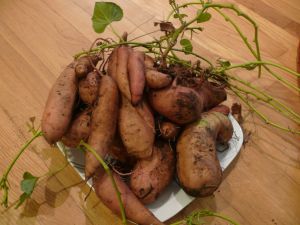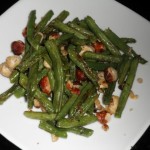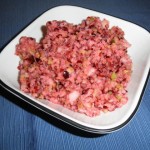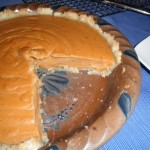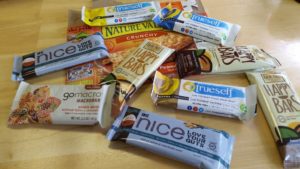Holiday Tips
Recipes
Resources
Book review
Holiday Tips:
Let’s face it. We’re smack in the middle of eating (and shopping) season. Here are some of my favorite ways to enjoy the spirit of the season and favorite holiday foods, while staying reasonably healthy, too.
Get Prepared: It’s not fun to sit in a room full of people eating delicious (off-limits) foods while you sit quietly drinking your water and nibbling a carrot stick. It’s also a recipe for a rebound binge at home. Have a 2 pack of gluten-free cookies, Clementines, or your favorite chocolate stashed away work, or bring an apple crisp, chocolate covered strawberries, meringues or “secret chocolate cake” along with you to a party. Check out this list of naturally gluten-free and seriously delicious options. Make sure your children have treats at school so they don’t feel left out, either.
Savor: Bottom line, you’re going to eat some treats this holiday season, so you might as well truly enjoy them. Be choice-ful and target things you enjoy most (i.e. no filling up on chips or every day foods unless those are the only options) When you eat, really eat! Take time to fill your senses and really enjoy. When we are really tasting our food (rather than inhaling something while talking and multitasking) food tastes much better, we’re more satisfied and full quicker.
Balance: if you are going to a holiday party in the evening, make an extra effort to eat well on other days. Add in more vegetables, fruits, beans, gluten-free whole grains, etc. and move more, too! A piece of chocolate cake one day won’t make or break a diet, but treats every day will add up.
Move the goodies out of sight: One of the biggest challenges of the season is a see-food diet, otherwise known as “if I see it, I eat it”. Studies show that when people keep food out of sight, they eat less. Avoid the constant temptation. Instead, put fruits on the counter or in your refrigerator where they are easy to grab. Seasonal fruits in the winter months include Clementines, oranges, pineapples, grapefruits, grapes, pomegranates, persimmons, mangos, and more.
Fill your table with fruit and veggie dishes: Have your holiday meals feature seasonal vegetables, such as sweet potatoes, collards or other greens. Make roasted chestnuts as a snack. Have a fruit inspired dessert, like baked apples, poached pears, sautéed bananas, etc.
Soups: as long as they’re not cream based, most soups are a healthy snack or part of a filling meal. Chicken and turkey soup with brown or wild rice, butternut squash soup, lentil soups and other beans soups are a great way to stay warm and enjoy seasonal flavors.
Get moving! Exercise is a great way to improve mood, reduce stress levels, and burn calories, too. Head out at lunchtime for a short walk, start a new family tradition and do something active at family events, dance at party functions, or make a habit of hitting the gym. You don’t have to wait until January for healthy resolutions.
More recipes from around the web:
Gluten Free Girl and the Chef is doing a daily cookie posting
Simply Sugar and Gluten Free
25 days of Christmas from Gluten Free Easily
Gluten Free Merry Christmas from the Whole Gang
Gluten and Dairy free Holiday tips from Gluten Free Goddess
Christmas Cookie Roundup (from my cookie exchange)
Christmas cookie roundup from Ginger Lemon Girl
Resources:
- Celiac and Thyroid Disease: Two of a Kind Please see a recent article I co-wrote with Dr. Gary Kaplan. It was published in Today’s Dietitian in November 2010 and was featured as the American College of Gasteroenterology’s Top Story.
- Celiac Disease, gluten intolerance, child feeding and more: listen to me on Celiac Radio! This August 2010 interview covers a wide range of topics for people on a gluten-free diet.
Book Review: Real Life with Celiac Disease, by Melinda Dennis, MS, RD, LDN and Daniel A Leffler, MD, MS
Looking for a great holiday stocking stuffer? This is an absolutely fantastic book. Each chapter is written by a Celiac/gluten free expert, ranging from the authors to Dr. Fasano to Dr. Green and many more. The topics are ones that I hear so frequently from my clients, like the impact of cheating, gluten challenges, a gluten-free and vegetarian diet, Celiac and anxiety, gluten intolerance, and much, much more. I’m an avid reader on Celiac both for my clients and for myself, and yet I was surprised to find some statistics in the book I haven’t seen before.
I’ve asked for a second copy for the holidays. And, let me say I’ve never reviewed a non-cookbook on my website before, because I can’t remember being as enthusiastic about any other book on Celiac Disease.
Harris Whole Health offers individual sessions, family sessions and group classes to help people eat healthier and feel better! Cheryl works with people to feel and look their best with a range of specialties, including Celiac Disease, food allergies, pregnancy, breastfeeding, vegetarian and vegan diets, preventing diseases and “whole foods” eating. Let’s get you on your way to achieving your goals. For an appointment with Cheryl Harris, Registered Dietitian and Nutritionist, please click here, email or call 571-271-8742.

